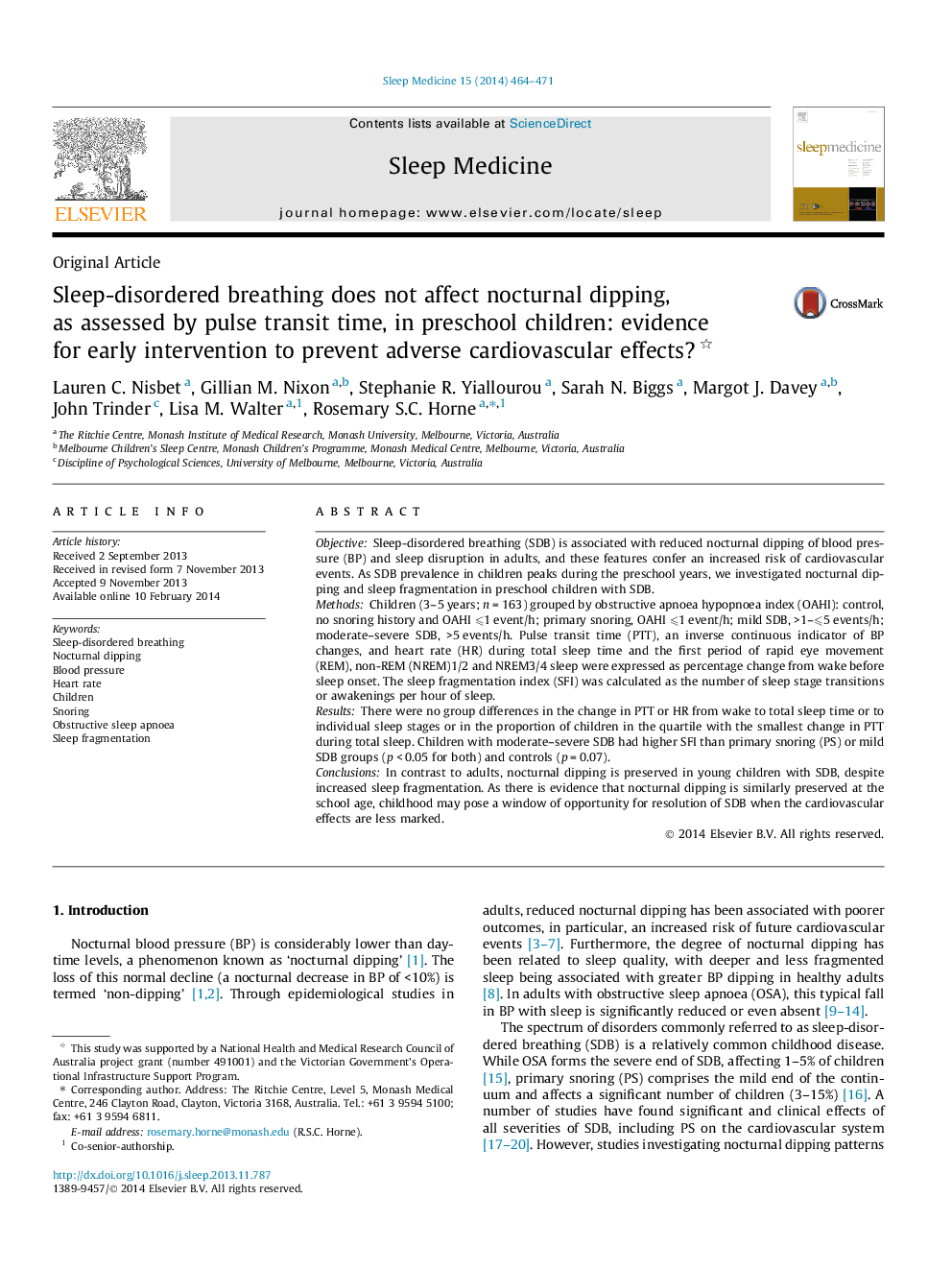| کد مقاله | کد نشریه | سال انتشار | مقاله انگلیسی | نسخه تمام متن |
|---|---|---|---|---|
| 3176151 | 1200248 | 2014 | 8 صفحه PDF | دانلود رایگان |

• Preschool children with SDB preserve nocturnal dipping of blood pressure.
• Preschool children with moderate–severe OSA exhibit increased sleep fragmentation.
• Cardiovascular effects of SDB are less marked in preschool children.
• Childhood may pose a window of opportunity for resolution of SDB.
ObjectiveSleep-disordered breathing (SDB) is associated with reduced nocturnal dipping of blood pressure (BP) and sleep disruption in adults, and these features confer an increased risk of cardiovascular events. As SDB prevalence in children peaks during the preschool years, we investigated nocturnal dipping and sleep fragmentation in preschool children with SDB.MethodsChildren (3–5 years; n = 163) grouped by obstructive apnoea hypopnoea index (OAHI): control, no snoring history and OAHI ⩽1 event/h; primary snoring, OAHI ⩽1 event/h; mild SDB, >1–⩽5 events/h; moderate–severe SDB, >5 events/h. Pulse transit time (PTT), an inverse continuous indicator of BP changes, and heart rate (HR) during total sleep time and the first period of rapid eye movement (REM), non-REM (NREM)1/2 and NREM3/4 sleep were expressed as percentage change from wake before sleep onset. The sleep fragmentation index (SFI) was calculated as the number of sleep stage transitions or awakenings per hour of sleep.ResultsThere were no group differences in the change in PTT or HR from wake to total sleep time or to individual sleep stages or in the proportion of children in the quartile with the smallest change in PTT during total sleep. Children with moderate–severe SDB had higher SFI than primary snoring (PS) or mild SDB groups (p < 0.05 for both) and controls (p = 0.07).ConclusionsIn contrast to adults, nocturnal dipping is preserved in young children with SDB, despite increased sleep fragmentation. As there is evidence that nocturnal dipping is similarly preserved at the school age, childhood may pose a window of opportunity for resolution of SDB when the cardiovascular effects are less marked.
Journal: Sleep Medicine - Volume 15, Issue 4, April 2014, Pages 464–471